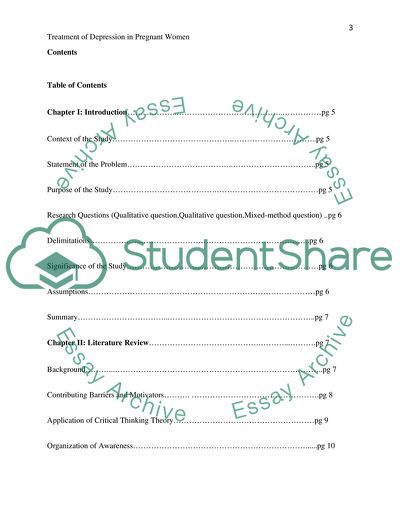Cite this document
(Treatment of Depression in Pregnant Women Research Paper Example | Topics and Well Written Essays - 4500 words - 2, n.d.)
Treatment of Depression in Pregnant Women Research Paper Example | Topics and Well Written Essays - 4500 words - 2. https://studentshare.org/psychology/1823942-emotional-and-physical-symptoms-of-depression-during-pregnancy-and-different-ways-of-treatment
Treatment of Depression in Pregnant Women Research Paper Example | Topics and Well Written Essays - 4500 words - 2. https://studentshare.org/psychology/1823942-emotional-and-physical-symptoms-of-depression-during-pregnancy-and-different-ways-of-treatment
(Treatment of Depression in Pregnant Women Research Paper Example | Topics and Well Written Essays - 4500 Words - 2)
Treatment of Depression in Pregnant Women Research Paper Example | Topics and Well Written Essays - 4500 Words - 2. https://studentshare.org/psychology/1823942-emotional-and-physical-symptoms-of-depression-during-pregnancy-and-different-ways-of-treatment.
Treatment of Depression in Pregnant Women Research Paper Example | Topics and Well Written Essays - 4500 Words - 2. https://studentshare.org/psychology/1823942-emotional-and-physical-symptoms-of-depression-during-pregnancy-and-different-ways-of-treatment.
“Treatment of Depression in Pregnant Women Research Paper Example | Topics and Well Written Essays - 4500 Words - 2”. https://studentshare.org/psychology/1823942-emotional-and-physical-symptoms-of-depression-during-pregnancy-and-different-ways-of-treatment.


